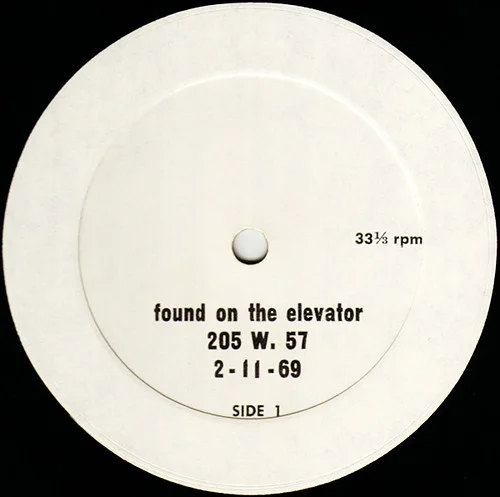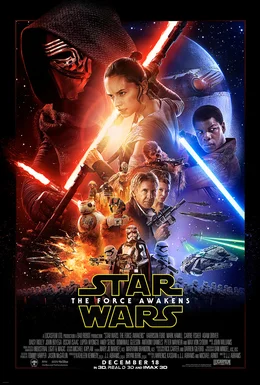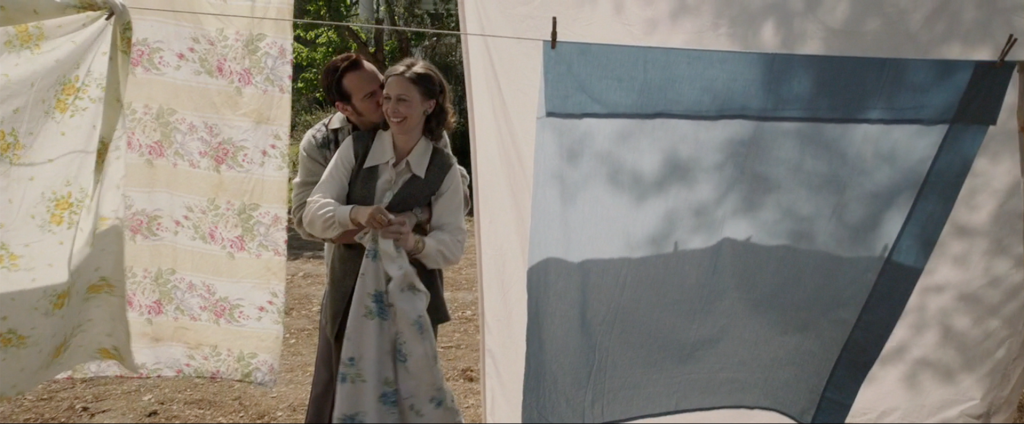Give Film a Chance
In March of 2013, one of my favorite podcasts, the /Filmcast (read: slash film cast), managed to raise over 10,000 dollars in a matter of weeks for a charity that is providing support for refugee camps in Kenya. Faith in humanity restored, right? Well, what if I were to tell you that instead of supplying necessities such as food and water, the charity will be supplying the people at the camp with film? I’d be willing to guess that quite a lot of you are probably very confused right now. What good does providing film do to these refugees? How could it possibly help improve their lives? In order to answer this question, I begin by giving you a history of the organization itself. Film Aid, the charity, is a non-profit organization that was founded by Caroline Baron, an award winning producer. The story goes that during the Balkan crisis in 1999, Caroline Baron was listening to the radio as they were describing the ongoing attempts to provide relief for the victims. It described how, although the victims were being provided with provisions to support their basic needs, other issues were not being met such as psychological trauma and, yes, even boredom. Boredom might sound like a strange issue but think about how your own mind wonders when you find yourself incredibly bored. Now imagine that you had just been through a traumatic experience and you have nothing to do but relive that experience over and over again in your head. Yes, human beings need food and water in order to survive but we are much more complicated than that.
Six weeks after hearing the radio story on the Balkan crisis, Caroline Baron was already on her way to Macedonia with a generator and a collection of video tapes to screen to the refugees at the camps there. This was the birth of Film Aid and it all stemmed from giving psychological relief to trauma victims. Since then, Film Aid has grown into a large organization that has provided relief to over 2 million people world wide. It has also diversified beyond simply providing psychological relief. For example, a couple of years ago there was a program in Nairobi called Sita Kimya. Roughly translated as “I will not be silenced”, the program consisted of showing films in the Kibera district after which discussion groups were organized. The films and discussions dealt around the issue of rape and the result was that people in the slum actually began to actively speak out about rape. Rapists were finally being held accountable for their actions. Showing these movies and encouraging the discussion about rape led to a real, tangible impact in this district.
One of the biggest purposes of Film Aid is to provide life-saving information to as many people in the refugee camps as possible. At times, there can be thousands upon thousands of people entering the camps during a short amount of time and making sure that each and every one of them gets the information they need can easily become a daunting task. This information can range from where to find water to how to look after ill children. Film Aid provides a means for these people to easily get the information in their own language. Through film, it is possible to educate hundreds of people at the same time thus saving thousands.
Film Aid is about giving people important information, one way or the other. In Dadaab, with the help of the refugee community, Film Aid has gone on to create numerous programs by listening to the community. When the community told Film Aid that they don’t have any printed material, the refugee community were given the tools necessary to start a refugee newspaper. In addition, since the majority of the people in the camps have cellphones, an SMS program was created in order to warn people about disease outbreaks in certain areas of the camp or to inform them about where to find food and water.
In addition to all of this, Film Aid provides a voice for these people. The 10,000 dollars gathered by the /Filmcast will go towards helping Film Aid set up a film class for 12 girls in Hagadera, a refugee camp in Dadaab. The classes will teach these girls pretty much everything they need to know in order to tell their stories through film. Among other things, they’ll learn how to use cameras, write scripts, and shoot and edit films. The money will also go towards setting up more video workshops which will again be specifically targeted towards women and girls. The goal at this point is to have 144 work shops which will be enough to reach just under 4,000 people.
Mark Somen, a board member of Film Aid, was interviewed by David Chen of the /Filmcast in an attempt to get people to understand why Film Aid is important. During this interview, Mark Somen told a story from a few years ago. At that time, Somen was running a hotel in Nairobi at which the Film Aid Kenya film festival was held that year. The winner of the program was a man named Liban Rashid who had made a movie called “Welcome to Dadaab”. Rashid had been just another refugee without the tools to express himself before he was given the opportunity to go through one of the many programs offered by Film Aid. At the awards ceremony, Rashid, a man who had experienced more hardships during his life than any man ever should, was able to stand there something that he himself had created. With tears in his eyes, he said “this is the most amazing day in my life”. Mark Somen sums it up by saying that “Film Aid has created this environment for people to tell their own stories. Everything we do is in the local language or languages so people understand this is coming as the result of the refugees saying ‘we need this’ or ‘this is a problem’ or ‘we want to fix this’.”
An old saying comes to mind. Give a man fish and he’ll eat for a day. Teach a man to fish and he’ll eat for a lifetime. In this case, however, it would be more appropriate to say, “give a man necessities and he’ll live for a day. Give a man a voice, and you’ll give him the opportunity to enact change”. Human beings need food and water in order to survive and, thankfully, there are organizations dedicated to providing these necessities. However, as I mentioned before, human beings are more complicated than this. Keeping them alive is one thing but making them feel alive is quite another.
A Personal Story
Seeing as how Film Aid enforces the idea that film can impact our lives in different ways, I figured I would take this opportunity to briefly talk about my own experiences with film (though there is also a sinister ulterior motive for this that will be revealed soon).
Like many of you, I’ve seen a lot of films in my life time; far too many to count. Inevitably, some of them have been altogether forgettable (at best) though I’ve also had more than a few experiences where a film has, in some way, had an impact on my life. The story I’d like to tell now involves my first experience with a proper horror movie.
In 1999, I was 11 years old and “The Blair Witch Project” had just come out. I probably also wasn’t a particularly bright 11 year old because I distinctly remember my older brother telling me that “The Blair Witch Project” was based on real stories about a witch who had kidnapped children. I tried my best to convince him that I didn’t believe him but the only person less convinced than him was me. Boy, was I scared… And then I had the bright idea of actually watching the movie.
It was a gorgeous and sunny day as my friend and I sat down with a VHS copy of “The Blair Witch Project” (no way were we going to watch it at night). We slid it in and it began… And it was like nothing I had ever experienced before. One of the things I remember best from that experience was how much it stuck with me. As we watched it during the day, with so much light in the room, it was hard to get particularly scared. In fact, after the movie, my friend and I immediately ran over to another friend’s house to brag about having made it through “The Blair Witch Project”. It was a whole different story, however, when night-time decided to come along with its faithful companion, the darkness. I remember cowering in bed, looking towards my window fully believing that a stick figure, like the ones in the film, would suddenly drop down in front it. Needless to say, I did not sleep well that night.
Cut forward a few years later and the experience is still with me but in an altogether more positive way. I was making movies of my own at that point and my most ambitious project by that point was a movie called “When Stuffed Animals Attack 2” that ‘borrowed’ very heavily from “The Blair Witch Project”. The film stuck with me so strongly that I couldn’t help but reference it in my own work. Fast forward another few years and I’m in high school using an English class project on narrative as an excuse to make yet another movie. The response I got for that project from my teacher at the time was amazing and stuck with me to the point that that experience is one of the reasons I’m now attempting to become a teacher myself.
My experiences with film, although not necessarily as life-saving as those around Film Aid have nevertheless shaped me into the person I am today. This brings me to that sinister ulterior motive I mentioned earlier… For you see, now it’s your turn to tell us about your own experiences with film. How have they shaped your life, if at all? In your opinion, do you feel that an organization such as Film Aid is justified?
Links:







